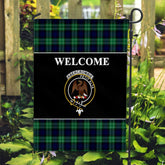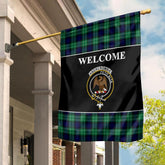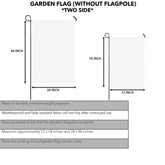
The earliest known mention of this distinguished name traces back to the 12th century, where an abbot of the Strathearn Monastery in Abernethy, Perthshire, graced the historical records. This esteemed figure was none other than Orm de Abernethy, who, following in his father's footsteps, also held the esteemed position of abbot and had the privilege of witnessing a Charter of William the Lion.
Legends suggest that Orm may have left an indelible mark on the lands of Ormison in East Lothian, bestowing his name upon them. From Orm's lineage emerged a notable figure named Lawrence, who, with unwavering determination, laid the foundations for the esteemed Baronial House of Abernethy. This lineage endured the test of time, etching its presence upon the pages of history for over a century. Colonel Charles Leslie, the 26th Baron of Balquhain, chronicled this rich account in his esteemed work, the Historical Records of Leslie, published in Edinburgh in 1869.
Delving further into the illustrious past, we encounter the great lordship of Abernethy, a realm that encompassed the esteemed barony of Ballinbreich. During the reign of Malcolm IV around 1160, Orm, the son of Hugh, held sway over this realm, securing its prosperity and influence. Moreover, Orm's connection to this noble domain was solidified by grants from William the Lion, circa 1190. The mantle passed to Lawrence, Orm's valiant son, who adopted the illustrious name of Abernethy, symbolizing his stewardship of these lands.
A testament to their benevolence, Lawrence bestowed an annual tribute of ten shillings upon the Canons of the priory of St. Andrews, a gesture that echoed his deep-rooted devotion. This act was carried out with the consent of his son and heir, Sir Patrick Abernethy, around the year 1230. The Abernethy lineage continued to flourish, and Sir Patrick's son, Hugh de Abernethy, emerged as a figure of great influence during the reign of Alexander III in the year 1360.
Tragedy befell Sir Hugh de Abernethy, as he departed from this world before the 3rd of September 1296. It was on this solemn date that King Edward I of England, in an act of mercy, ordered the sheriff of Forfar to reinstate Maria, the wife of the late Hugh de Abernethy, to her rightful lands. Sir Alexander de Abernethy, the son of Sir Hugh, succeeded his father's illustrious legacy. He dutifully swore fealty to Edward I on the 10th of July 1292, and once more on the 25th of June 1296, firmly aligning himself with English interests. His unwavering loyalty led to his appointment as warden of the region stretching between the Forth and the mountains by Edward II in 1310. In 1312, he stood as one of the English plenipotentiaries chosen to negotiate with King Robert Bruce. His illustrious journey continued with a grant from Edward II, bestowing upon him the manor of Wyleighten on the 3rd of May 1313.
The passing of Sir Alexander de Abernethy saw the division of the lordship of Abernethy between his daughters and co-heiresses, Margaret and Mary. Margaret, wedded to John Stuart, Earl of Angus, and Mary, united in matrimony with Sir Andrew de Leslie, VI Dominus Ejusdem, received their portion of this noble inheritance.
In the annals of history, we find mention of Abernethies residing in Upper Lauderdale during the 13th century. Notably, John of Abrenethy, a knight of Scotland, was granted safe passage in England in 1399, while George Abrnnete received similar recognition in 1465.
Lord Abernethy's name is intricately linked with the church of Lesmahagow in Lanarkshire, as one of the three individuals seeking refuge within its hallowed walls. Their sanctuary was granted under the sacred protection of the church and the "Kings Peace," bestowed by David.
Sir Andrew, the last known bearer of the Abernethy lordship, left an indelible mark on the pages of history. The noble Sir Andrew, hailing from the esteemed lineage of Abernethy, forged a momentous union with Mary Abernethy. This auspicious marriage in 1316 secured for Sir Andrew the barony of Ballinbreich in Fifeshire, known as the battle cry of Clan Leslie, and the barony of Cairney (now presumed to be Cairny), nestled in Forfar. These charters, bestowed upon Sir Andrew by the illustrious King Robert I, the Bruce, solidified his noble standing.
Proudly, Sir Andrew quartered the Arms of Abernethy with his own, a heraldic emblem that would grace the shields of subsequent generations, including the illustrious Earls of Rothes. From this union sprang forth the remaining Lords Leslie, the Earls of Rothes and Ross, and the inaugural Baron of Balquhain. From the loins of Sir Andrew, numerous branches of the Leslie clan, spanning Scotland, Ireland, Germany, Russia, France, and beyond, find their esteemed heritage intertwined with the blood of Abernethy. Thus, Mary Abernethy stands as an ancestral matriarch to a vast multitude of Leslies.
Through the annals of time, the Abernethy lineage has persevered, solidifying its place among the ancient Scottish families dating back to the 13th century. The descendants of this noble house have dispersed far and wide, their footsteps echoing across the globe. An intriguing facet of their history reveals that during the 17th century, while many Scots sought new horizons on the continent, Aberneys emerged as "Abernetti" in Prussia and "Ebbernet" in Sweden.
Across the vast expanse of oceans, one notable Abernathy, William, is said to have made his mark in America during the first half of the 17th century, where he arrived in Connecticut. The Abernathys also established their presence in Ireland, with John Abernethy (1680-1740) emerging as a celebrated and controversial clergyman. Educated at the esteemed University of Glasgow and Edinburgh, John contributed to a schism within the Irish Presbyterian Church that endured for a century, earning him both acclaim and notoriety. Historians regard him as a champion of freedom of conscience and opinion, an individual whose name deserves honor by all who cherish these principles.
In the realm of medicine, another notable Abernathy, John, born in London in 1764, rose to prominence as a distinguished surgeon and esteemed medical professor. His lectures garnered such immense popularity that the hospital to which he was affiliated found it necessary to construct a dedicated auditorium to accommodate his vast number of students.
Throughout the centuries, the spelling of the name has taken various forms, including Abernethy, Abrenethy, Abrnnete, Haberinthan, Abirnythy, Albirnyth, Abernethi, Abernetti, Ebbernet, and Habernethi.











